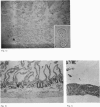Abstract
We have used suspensions of isolated cells to study the metabolism of the mucosal epithelium and to compare its activity with that of other tissues in the intestinal wall of guinea pig. Only 4% of the total glycolytic activity of the intestinal wall could be attributed to the mucosal epithelium. In contrast, about 76% of the activity was located in the intestinal muscle and the remaining 20% in the intervening tissue.
Clearly the view that the major proportion of the glycolytic activity of the small intestine resides in the mucosal epithelium does not apply to the guinea pig. In the light of our results, it would be prudent to re-examine any conclusions about the distribution of metabolic activity throughout the gut wall if the supporting evidence has been drawn from experiments with mucosal homogenates.
Full text
PDF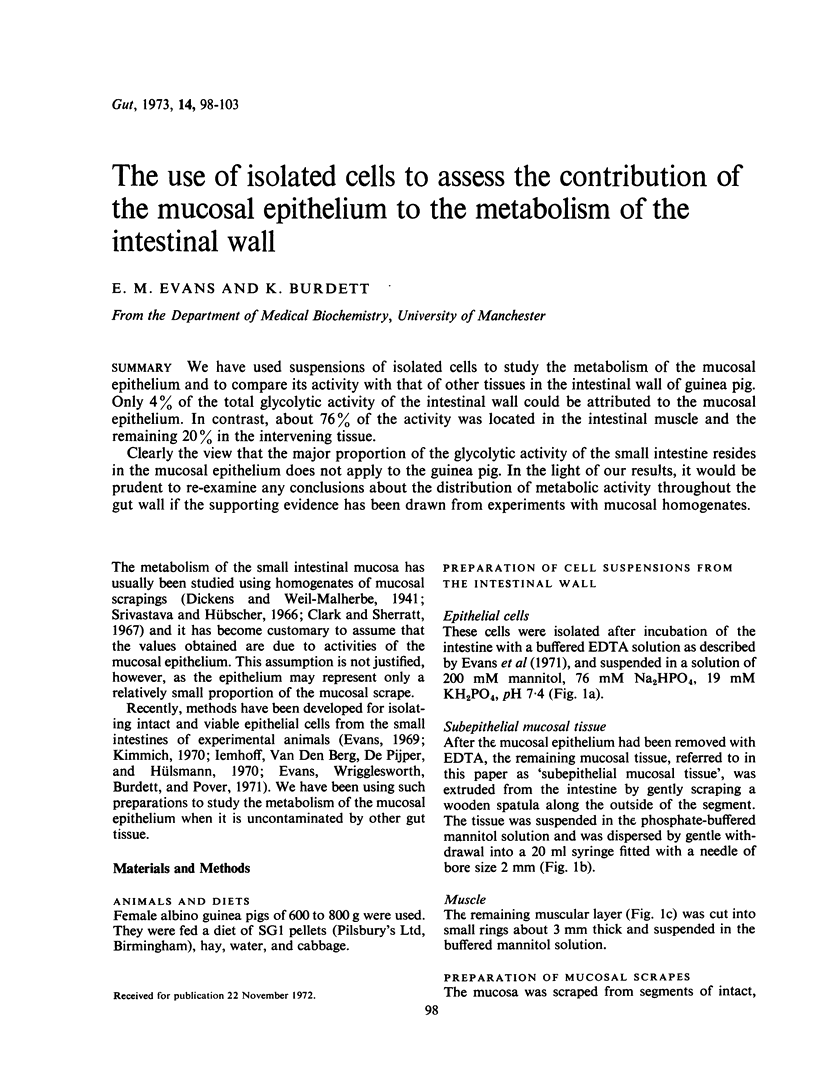
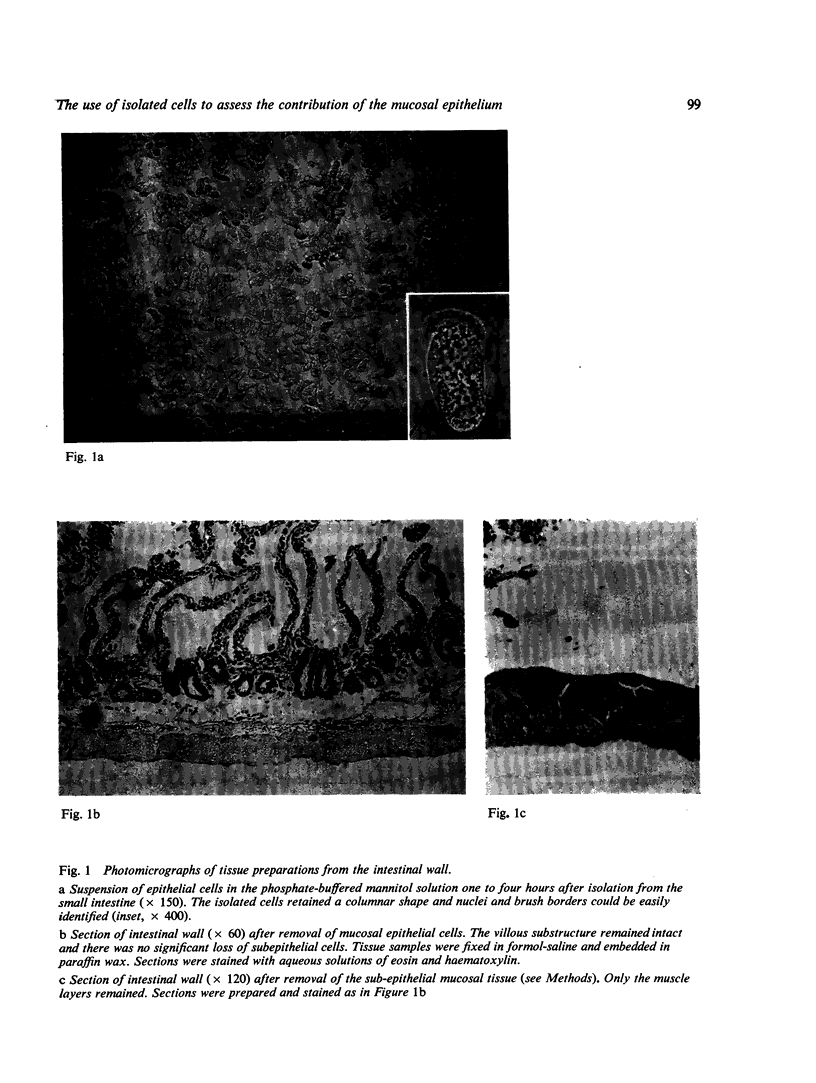
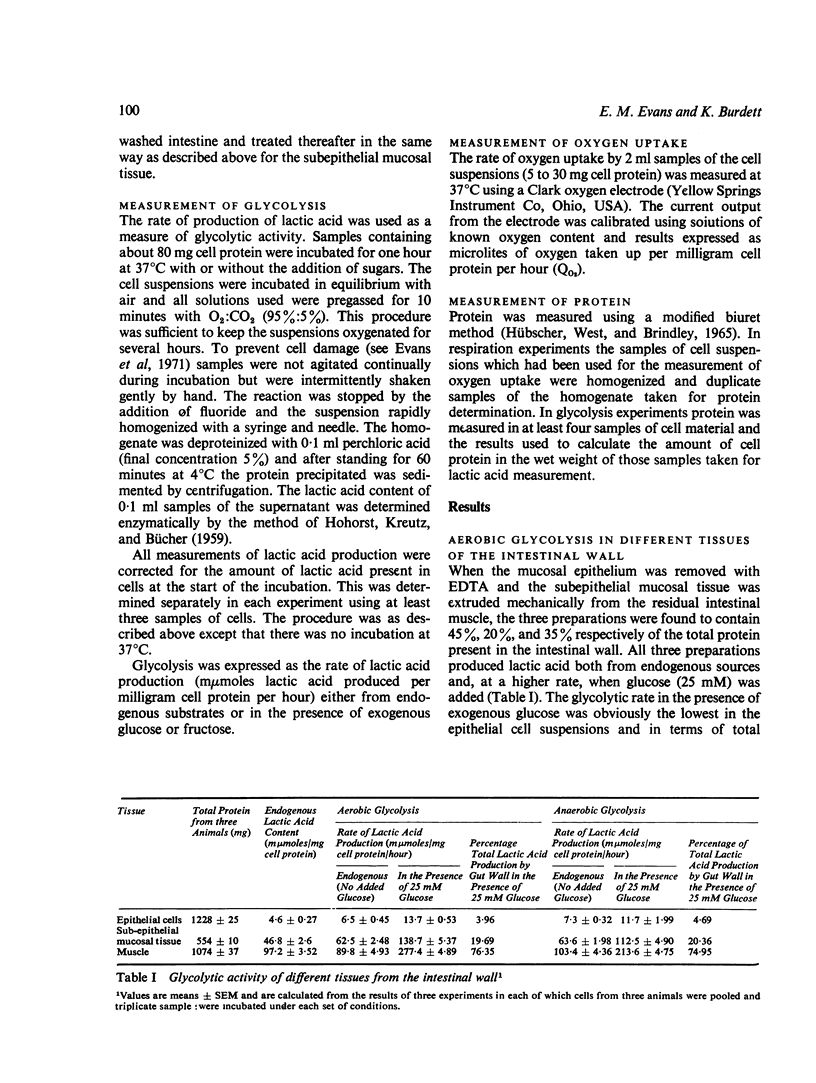
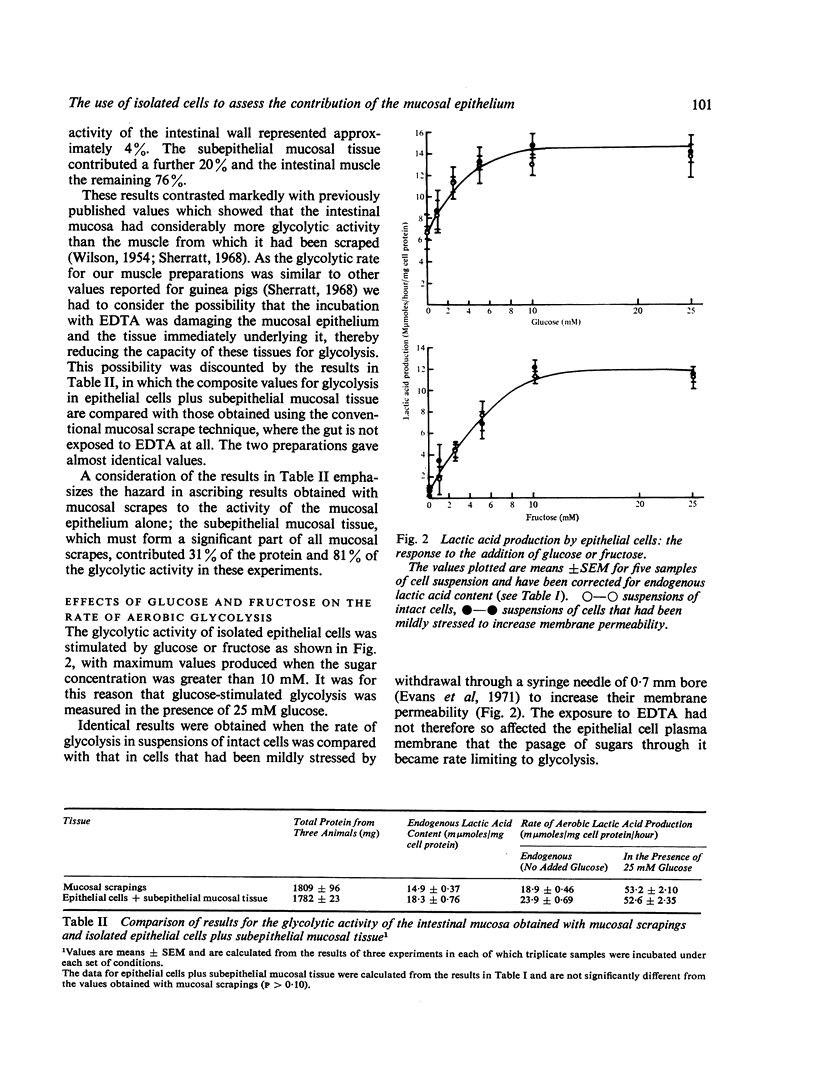
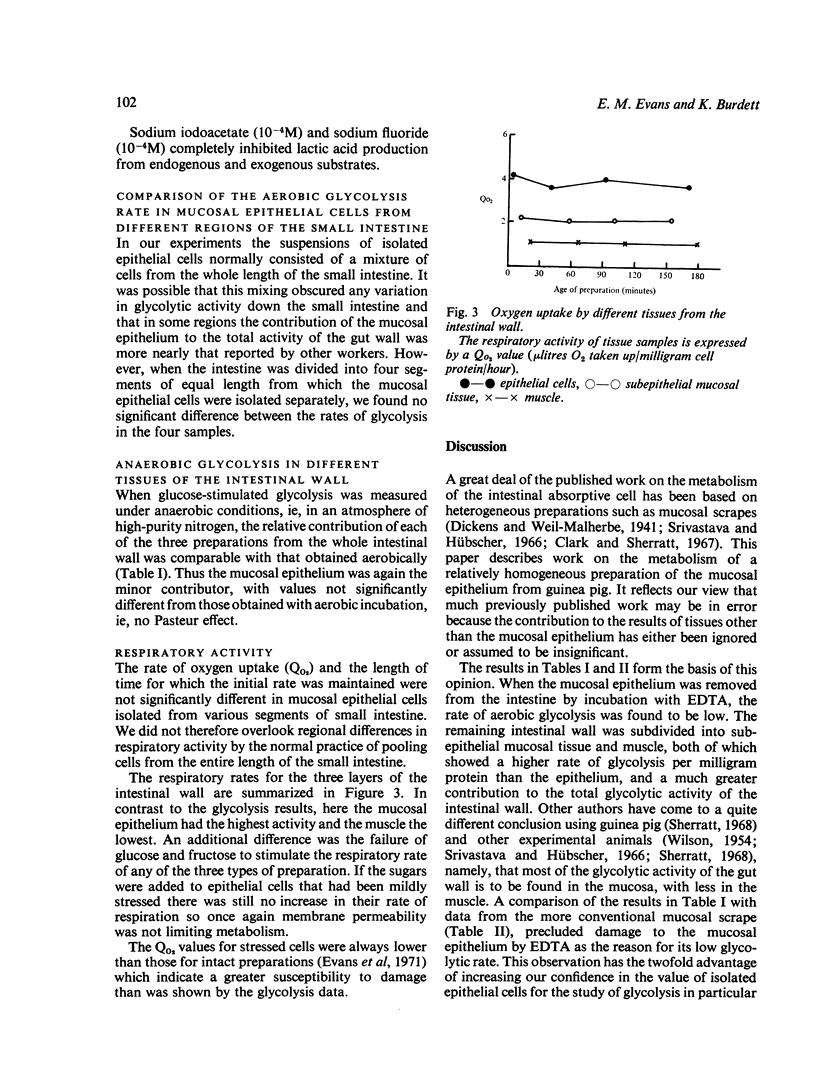
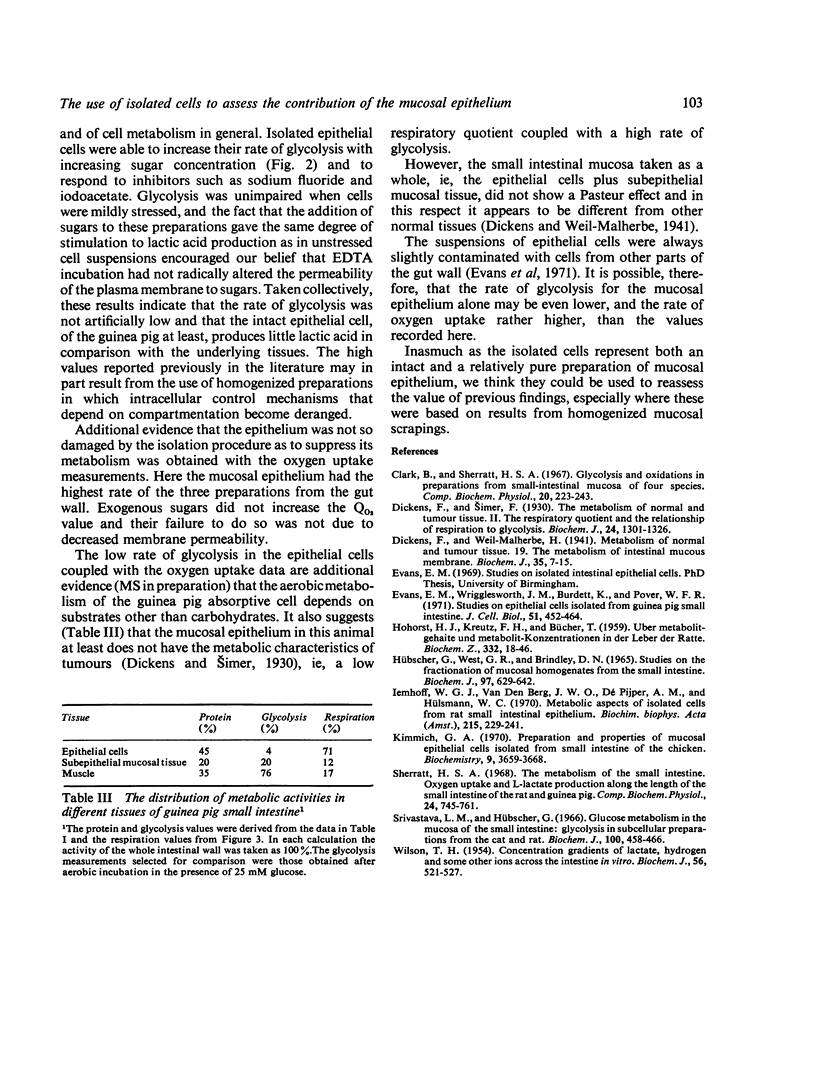
Images in this article
Selected References
These references are in PubMed. This may not be the complete list of references from this article.
- Dickens F., Simer F. The metabolism of normal and tumour tissue: The respiratory quotient, and the relationship of respiration to glycolysis. Biochem J. 1930;24(5):1301–1326. doi: 10.1042/bj0241301. [DOI] [PMC free article] [PubMed] [Google Scholar]
- Dickens F., Weil-Malherbe H. Metabolism of normal and tumour tissue: The metabolism of intestinal mucous membrane. Biochem J. 1941 Jan;35(1-2):7–15. doi: 10.1042/bj0350007. [DOI] [PMC free article] [PubMed] [Google Scholar]
- Evans E. M., Wrigglesworth J. M., Burdett K., Pover W. F. Studies on epithelial cells isolated from guinea pig small intestine. J Cell Biol. 1971 Nov;51(21):452–464. doi: 10.1083/jcb.51.2.452. [DOI] [PMC free article] [PubMed] [Google Scholar]
- Hübscher G., West G. R., Brindley D. N. Studies on the fractionation of mucosal homogenates from the small intestine. Biochem J. 1965 Dec;97(3):629–642. doi: 10.1042/bj0970629. [DOI] [PMC free article] [PubMed] [Google Scholar]
- Iemhoff W. G., van den Berg J. W., de Pijper A. M., Hülsmann W. C. Metabolic aspects of isolated cells from rat small intestinal epithelium. Biochim Biophys Acta. 1970 Aug 14;215(2):229–241. doi: 10.1016/0304-4165(70)90020-6. [DOI] [PubMed] [Google Scholar]
- Kimmich G. A. Preparation and properties of mucosl epithelial cells isolated frmsmall intestine of the chicken. Biochemistry. 1970 Sep 15;9(19):3659–3668. doi: 10.1021/bi00821a003. [DOI] [PubMed] [Google Scholar]
- Sherratt H. S. The metabolism of the small intestine. Oxygen uptake and L-lactate production along the length of the small intestine of the rat and guinea pig. Comp Biochem Physiol. 1968 Mar;24(3):745–761. doi: 10.1016/0010-406x(68)90787-1. [DOI] [PubMed] [Google Scholar]
- Srivastava L. M., Hübscher G. Glucose metabolism in the mucosa of the small intestine. Glycolysis in subcellular preparations from the cat and rat. Biochem J. 1966 Aug;100(2):458–466. doi: 10.1042/bj1000458. [DOI] [PMC free article] [PubMed] [Google Scholar]
- WILSON T. H. Concentration gradients of lactate, hydrogen and some other ions across the intestine in vitro. Biochem J. 1954 Mar;56(3):521–527. doi: 10.1042/bj0560521. [DOI] [PMC free article] [PubMed] [Google Scholar]



